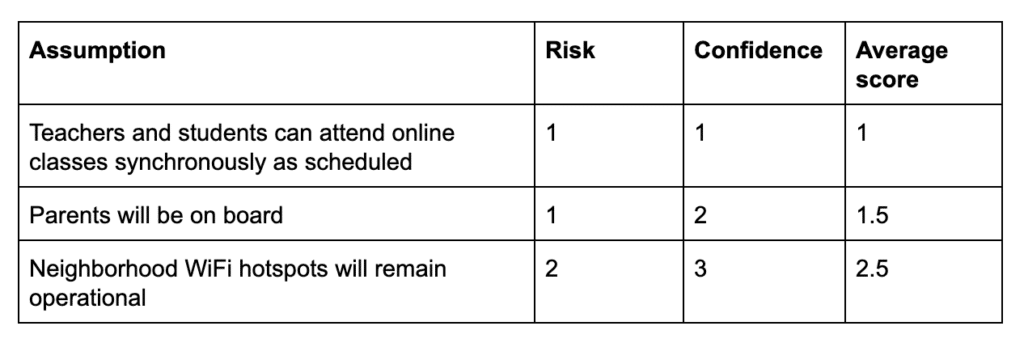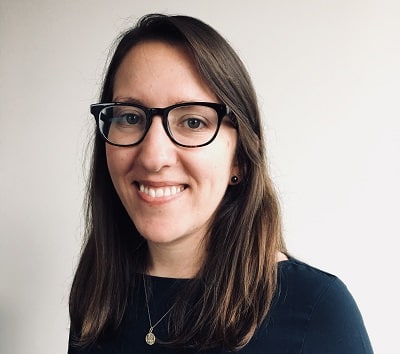As schools grapple with sudden closures due to the COVID-19 pandemic, the phrase “building the plane as we fly it” is front of mind for educators scrambling to shift to virtual instruction. The phrase resonates because it suggests the difference between conventional approaches to planning, and planning in dynamic or unknown circumstances.
Conventional planning operates on the premise that it’s possible to extrapolate future results from a well-understood and predictable platform of past experience. Predictions about the future are expected to be accurate because they are based on solid knowledge rather than assumptions. In this scenario, deviations from the plan are a bad thing because they risk leading away from circumstances that leaders understand well.
Our school systems are accustomed to conventional planning: teachers often confirm a curriculum scope and sequence for the entire semester or year, and many schools submit annual accountability plans to the district or county. But in unknown, uncertain, and evolving circumstances, conventional approaches to planning just won’t work because knowledge is scarce and uncertainty is high. Instead, educators must make do with assumptions about the possible futures on which their current decisions are based.
Fortunately, that doesn’t have to mean defaulting to the Wild West. A different approach to planning, called discovery-driven planning, is in wide use by start-ups and new ventures as a way to be systematic about planning when little is known and much is assumed. The approach imposes disciplines different from, but no less precise than, the disciplines used in conventional planning.
Here’s how teachers and school and district leaders can use discovery-driven planning in their shift to virtual learning:
1. Align on a SMART goal.
Faced with sudden closures, any educator’s gut reaction is likely to be: “figure out how to keep kids learning.” But to iterate on plans that optimize for a north star, it’s important for the goal to be SMART: specific, measurable, actionable, realistic, and time-related. In normal circumstances, a SMART goal should target an outcome like achievement or student engagement. In these temporary circumstances where goals may initially have a shorter timeline, a teacher’s goal might be: “Measure an average of 4 out of 5 stars for family satisfaction with the virtual learning opportunities I offer my students over the course of four weeks.” A district might set out to “Ensure access for each student to at least 60% of core class material online within two weeks.”
2. Make an exhaustive list of the assumptions that must prove true for the goal to be realized.
At their outset, virtual learning programs can carry many assumptions, some of which may not prove viable. Assumptions may be “students have access to devices and the internet,” “parents will be on board,” “teachers know how to facilitate online instruction”, and so forth. Have people at the table in this brainstorming exercise represent a variety of departments and perspectives, so that the assumptions will be exhaustive. Many discovery-driven planning teams document as many as 100 assumptions to start.
3. Rank each assumption in terms of both risk and confidence.
When all the conceivable assumptions are identified, rate each assumption according to its risk level and its certainty, then average the scores for each assumption. Next, sort the assumptions according to their average scores, with the most risky and least certain assumptions at the top of the list. An example could look like this:
Risk:
- 1 = Being wrong will be catastrophic to the project
- 2 = Being wrong would be a medium-sized problem
- 3 = It’s not a big deal if we’re wrong
Confidence:
- 1 = No confidence that the assumption is correct
- 2 = Medium level of confidence
- 3 = High level of confidence

4. Develop plans to test the highest priority assumptions first.
Assumptions with scores closest to 1 should be tested first, and immediately. Tests can initially be simple and cheap, such as running a quick poll or calling a colleague in another district who has experience with the issue to see if their experience supports your assumption. As time goes on, tests should increasingly be run “in the field” by monitoring the results of actual implementation.
5. Determine if the assumptions are holding true at predetermined checkpoints, and adjust if they don’t.
If assumptions hold true, keep moving forward with that aspect of the plan. If they don’t, make changes or reimagine your approach. As you make adjustments and iterate, you may find that your methods for achieving your SMART goal look very different from what you originally imagined—which is evidence of converting assumptions into knowledge. As plans change, remember that new assumptions may be introduced, so don’t be afraid to add to or adjust your assumptions list. As opposed to a static plan that can be filed away once it’s approved, a discovery-driven plan is a living document.
Faced with the prospect of only a few days to move instruction online, educators are already doing their best to operate with fluid and iterative plans—and the list of unknowns can be overwhelming. In circumstances like these, instead of worrying about plans being imperfect and things not working out, define success as getting from assumptions to knowledge as quickly as possible. And to avoid the gridlock of endless debate over the hypothetical benefits of different approaches, prioritize the fastest and cheapest ways to convert ideas to real evidence.
Without a well-understood system for how to plan when knowledge is scarce, it’s easy for teams to feel like they have little or no control. Adopting the shared language, processes, and disciplines of a discovery-driven planning framework may pay off for leaders whose teams are unused to “building the plane as they fly it.”



